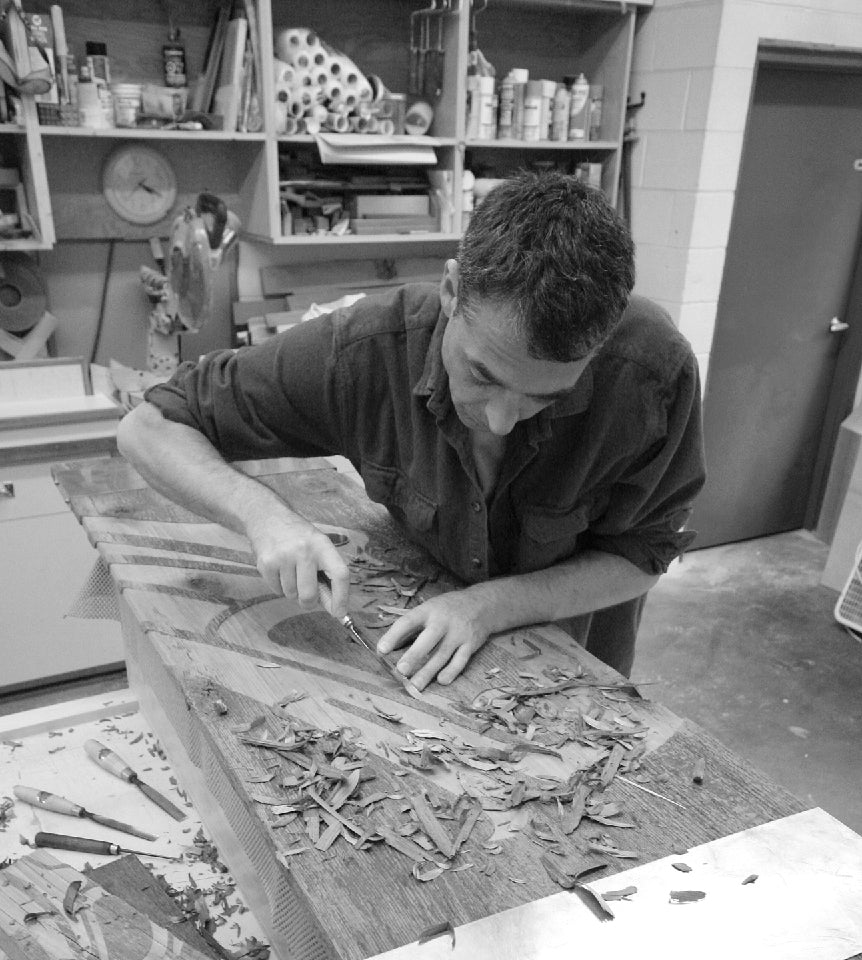About ten years ago Vancouver artist Geoff Ross started carving reclaimed cedar panels. Right around that same time, we opened True North and Geoff was one of our first artists. Ten years later we are celebrating our first decade with an open house that once again features Geoff’s work.

Geoff, whose adopted brother is of Interior Salish descent, grew up in a family that exposed him to First Nations' cultural and artistic traditions. This exposure made a strong impression on him as a child and later inspired his artwork. Geoff was especially drawn to the design elements of the art created by the Tlingit, Haida and Tsimshian peoples of the Northwest Coast. Referred to as “formline design,” its most familiar use is on totem poles and masks, but it is also used on bentwood boxes, feast bowls, and other objects.
Formline design is over two thousand years, and relies on only a few distinctive shapes, such as ovoids, U-forms and S-forms. These shapes vary in width and arrangement as they flow throughout a composition. Traditionally, when linked together, formlines are used to compose an image or series of images that might represent culture stories, historic events, clan crests, or other concepts, including aspects of the landscape and weather.

Just as any calligrapher brings his or her own approach to a particular lettering style, Geoff has his own “hand” when he uses formline design elements to create his carved panels. He composes original designs that “don’t necessarily represent animals or spirits found in traditional native art,” but instead uses the “language” of formline to create his own calligraphic abstractions.
Geoff describes his work as looking like found fragments of “something bigger, from long ago.” And we agree—his carved panels of cedar and other reclaimed woods do have the weathered feel of ancient artifacts.
From the start, Geoff wanted to be sensitive to the First Nations cultures who created formline design, so he worked to establish his own unique interpretation and expression of the traditional forms. His work is in the personal collections of numerous First Nation artists, and he was honored to be commissioned by a First Nations organization to create work for public spaces.
